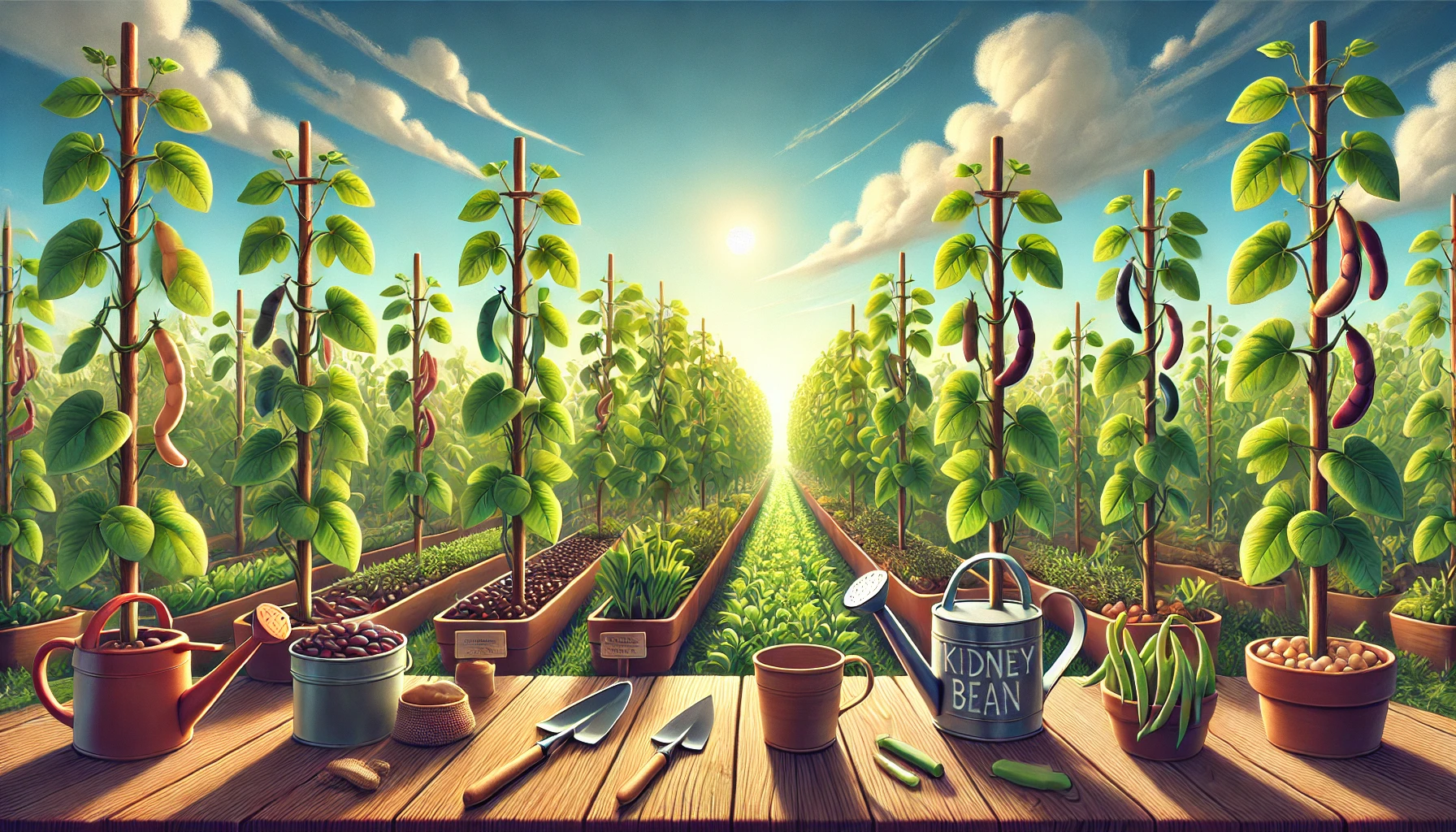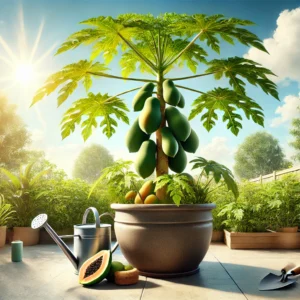1. What type of soil is best for growing kidney beans?
Medium-textured, well-draining soil with a pH between 6.0 and 7.0 is ideal for kidney beans.
2. How much sunlight do kidney beans need?
Kidney beans require full sunlight, which means at least 6-8 hours of direct sunlight per day.
3. When should I plant kidney beans?
Plant kidney beans in late spring to early summer after the last frost, when soil temperatures are consistently above 60°F (16°C).
4. How deep should I plant kidney bean seeds?
Plant kidney bean seeds about 1-1.5 inches deep in the soil.
5. What is the ideal spacing for kidney bean plants?
Space kidney bean plants about 3-4 inches apart, with rows 18-24 inches apart.
6. How often should I water kidney bean plants?
Water kidney bean plants deeply once a week, ensuring the soil remains moist but not waterlogged.
7. Can kidney beans be grown in containers?
Yes, kidney beans can be grown in containers with at least 12 inches of depth and good drainage.
8. How do I prepare the soil for planting kidney beans?
Loosen the soil to a depth of about 8-10 inches, incorporating organic matter like compost to improve fertility and drainage.
9. Do kidney bean plants need fertilization?
Kidney beans generally don’t require much fertilizer, but a balanced fertilizer can be applied at planting if soil fertility is low.
10. What are common pests that affect kidney beans?
Common pests include aphids, bean beetles, and cutworms.
11. How can I prevent pests on kidney bean plants?
Use insecticidal soap, neem oil, or introduce beneficial insects like ladybugs to control pests naturally.
12. What are common diseases that affect kidney beans?
Common diseases include anthracnose, bacterial blight, and rust.
13. How can I prevent diseases in kidney bean plants?
Rotate crops, provide adequate spacing for airflow, and avoid overhead watering to reduce disease risk.
14. When are kidney beans ready to harvest?
Kidney beans are ready to harvest when the pods are fully mature and dry, typically 90-100 days after planting.
15. How do I harvest kidney beans?
Harvest kidney beans by pulling the entire plant once the pods are dry and brittle. Hang the plants upside down in a dry, well-ventilated area to finish drying.
16. How do I store harvested kidney beans?
Once fully dried, shell the beans and store them in an airtight container in a cool, dark place.
17. Can kidney beans be grown indoors?
While challenging, kidney beans can be grown indoors if they receive sufficient light, either from a sunny window or grow lights.
18. What companion plants are good for kidney beans?
Good companion plants include corn, cucumber, and potatoes.
19. What plants should I avoid planting near kidney beans?
Avoid planting kidney beans near onions, garlic, and fennel.
20. How do I improve soil fertility for kidney beans?
Incorporate well-rotted compost or manure into the soil before planting to improve fertility.
21. Can kidney beans fix nitrogen in the soil?
Yes, kidney beans, like other legumes, have a symbiotic relationship with nitrogen-fixing bacteria that help enrich the soil.
22. How do I support kidney bean plants?
Bush varieties typically do not need support, but pole varieties benefit from a trellis or stakes.
23. Can kidney beans be grown from store-bought beans?
It’s not recommended as store-bought beans may not be viable or suited to your local growing conditions.
24. How do I save seeds from kidney bean plants?
Allow the pods to fully mature and dry on the plant, then collect and store the seeds in a cool, dry place.
25. How much space do kidney beans need to grow?
Each kidney bean plant needs about 3-4 inches of space, and rows should be 18-24 inches apart.
26. How long do kidney bean plants live?
Kidney bean plants are annuals, completing their life cycle in one growing season.
27. How do I know if my soil is suitable for kidney beans?
Perform a soil test to check for pH and nutrient levels, ensuring the soil is well-draining and within the ideal pH range.
28. What climate is best for growing kidney beans?
Kidney beans grow best in warm climates with temperatures between 70-80°F (21-27°C).
29. How can I extend the growing season for kidney beans?
Use row covers or grow kidney beans in containers that can be moved indoors during cool weather.
30. Can kidney beans be grown in sandy soil?
Yes, but sandy soil should be amended with organic matter to retain moisture and improve fertility.
31. How do I deal with weeds in my kidney bean garden?
Mulch around plants to suppress weeds and hand-pull any that do emerge.
32. Can kidney beans be grown from cuttings?
No, kidney beans must be grown from seeds.
33. How do I ensure good germination of kidney bean seeds?
Soak seeds overnight before planting and keep the soil consistently moist until germination.
34. How often should I rotate kidney bean crops?
Rotate kidney beans with other crops every 2-3 years to prevent soil depletion and reduce disease risk.
35. What organic fertilizers are good for kidney beans?
Composted manure, fish emulsion, and compost tea are excellent organic fertilizers for kidney beans.
36. How do I protect kidney beans from frost?
Use row covers or cloches to protect plants from unexpected late spring or early fall frosts.
37. Can kidney beans grow in clay soil?
Kidney beans struggle in heavy clay soil unless it is amended with organic matter to improve drainage.
38. How do I water kidney beans in containers?
Water until it drains from the bottom of the container, ensuring consistent moisture but avoiding waterlogging.
39. What type of kidney beans should I grow?
Choose varieties based on your climate, such as ‘Dark Red Kidney’ or ‘Light Red Kidney’.
40. How do I prevent kidney bean plants from getting leggy?
Ensure they receive enough light and avoid over-fertilizing with nitrogen-rich fertilizers.
41. What is the best way to dry kidney beans after harvesting?
Hang the plants or spread the pods in a single layer in a dry, well-ventilated area until fully dry.
42. Can I use mulch around kidney bean plants?
Yes, use organic mulch to retain soil moisture and suppress weeds.
43. How do I prune kidney bean plants?
Pruning is not typically necessary for kidney bean plants.
44. What is the best temperature for germinating kidney bean seeds?
The ideal temperature for germination is between 70-85°F (21-29°C).
45. How do I identify nutrient deficiencies in kidney bean plants?
Look for signs like yellowing leaves (nitrogen deficiency) or poor growth and flowering (phosphorus deficiency).
46. How do I improve drainage in heavy soil for kidney beans?
Incorporate organic matter like compost or sand to improve soil structure and drainage.
47. Can kidney beans be grown hydroponically?
Yes, kidney beans can be grown hydroponically, though it’s less common and requires careful nutrient management.
48. What are the benefits of growing kidney beans?
Kidney beans are nutritious, high in protein and fiber, and can enrich soil through nitrogen fixation.
49. How can I control aphids on kidney bean plants?
Introduce beneficial insects like ladybugs, use insecticidal soap, or apply neem oil to control aphids.
50. How do I ensure a good yield of kidney beans?
Provide optimal growing conditions, including full sun, well-draining soil, adequate water, and pest management. Rotate crops and use mulch to maintain soil health.



